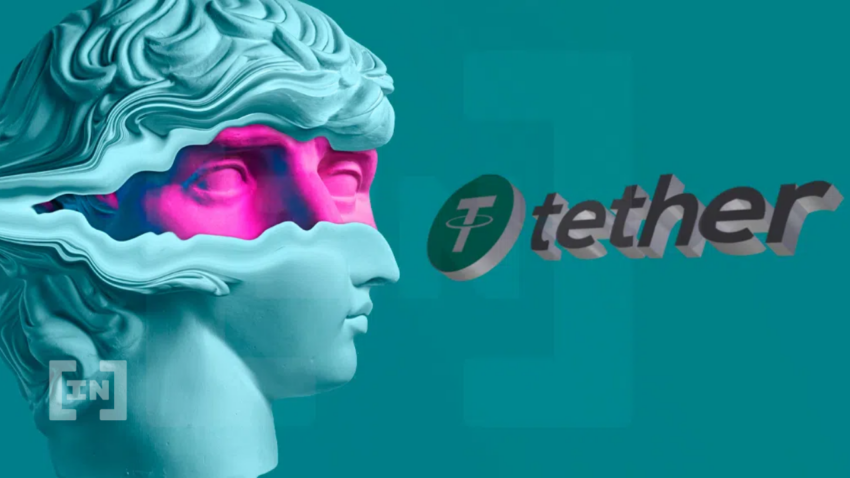Tether alleges that the Wall Street Journal has spread false information about its reserve composition and business profitability.
In a statement issued on Aug. 30, 2022, Tether accused the Wall Street Journal of choosing to target Tether and harm its reputation through unsubstantiated claims.
The statement claims the WSJ’s criticism of Tether’s use of three months’ worth of T-bills as a reserve asset is unfounded since U.S. Treasuries have been a safe-haven asset globally for many years. As Fortune confirms, U.S. Treasuries are considered almost as safe and as liquid as the U.S. dollar, backing up Tether’s claims.
Tether also refutes the WSJ thesis that hedge funds betting on Tether’s collapse threaten the stablecoin’s liquidity, saying that such a thesis comes from a “fundamental misunderstanding” of Tether and the cryptocurrency market.
Transparency war in full swing
Tether issues the stablecoin USDT, a cryptocurrency pegged to a reserve of underlying assets to minimize price movement. Unlike banks, regulators have been relatively lax regarding the level of disclosure stablecoin issuers must make regarding their reserve compositions. However, the recent collapse of the TerraUSD stablecoin has brought stablecoin reserve compositions under scrutiny, with Tether being no exception.
The Financial Times reported that Tether’s stablecoin briefly lost its peg to the U.S. dollar on May 12, 2022, as holders of USDT redeemed more than $10 billion worth of USDT. Despite reassurances by Tether’s CTO that the company had enough liquidity to honor $10 billion worth of redemptions, investors shaken by TerraUSD’s collapse demanded more.
A transparency war between stablecoin issuers ensued. While no international accounting standards exist for digital assets, issuers have nevertheless resorted to reports called attestations that detail the composition of their reserves. Tether claims that the WSJ’s assertions that other stablecoin issuers have been audited are false and that it has been open about its asset composition, pending a full audit.
As far as Be[In]Crypto can tell, the issuer of USDC stablecoin, Circle, provides attestation reports detailing its reserve composition. Paxos Trust, the issuer of the Pax dollar and another stablecoin, Binance USD, recently provided a report detailing the reserve composition of both stablecoins, down to the serial numbers of T-bills it holds. Neither issuer claims to have undergone a full audit.
In a report released in the first quarter of 2021, auditing firm MHA Cayman indicated that Tether held $82.2 billion of fiat reserves to back the USDT in circulation. Approximately 25% of holdings were made up of commercial paper, a type of commercial IOU, while 46% consisted of U.S. Treasury bills. Tether claims that the reduction in commercial since the previous report in Dec. 2021 makes good on its promise to reduce holdings of commercial paper.
Uncertainty around Tether’s reserves dates back to 2016
Scrutiny of Tether’s reserves began way before the TerraUSD collapse. In Feb. 2021, Tether and its sister company Bitfinex paid the New York Attorney-General an $18.5 million settlement for allegedly concealing substantial losses of client and corporate funds. Furthermore, an investigation by the office of the NYAG alleges that Tether lacked reserves to back up its coin, having no known banking relations. Tether has neither confirmed nor denied these findings.
In Oct. 2021, the United States Commodities and Futures Trading Commission fined Tether $41 million for telling customers between Jun. 2016 and Feb. 2019, that its reserves were 100% supported by fiat assets. According to commodities watchdog, Tether held only 27.6% of fiat assets required to support the tokens in circulation at the time. Again, the company settled without denying or confirming the allegations.
For Be[In]Crypto’s latest Bitcoin (BTC) analysis, click here.
Disclaimer
In adherence to the Trust Project guidelines, BeInCrypto is committed to unbiased, transparent reporting. This news article aims to provide accurate, timely information. However, readers are advised to verify facts independently and consult with a professional before making any decisions based on this content. Please note that our Terms and Conditions, Privacy Policy, and Disclaimers have been updated.



